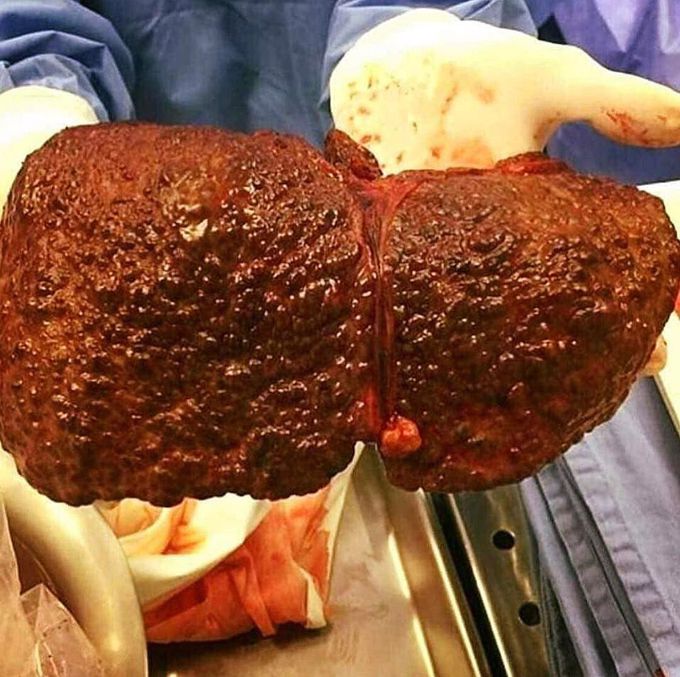


Here’s a liver cirrhosis showing multiple nodules on what was once a smooth surface!
Liver cirrhosis is an end result of an underlying pathology. It develops due to an ongoing liver damage with cell necrosis followed by fibrosis and hepatocyte regeneration that results in scar tissue replacing the normal, healthy tissue of the liver. Notice the large nodules separated by wider scars are irregularly distributed throughout the firm liver, which occurs usually due to an infectious agent such as viral hepatitis which does not diffuse uniformly throughout the liver. Wilson’s disease, alpha-1-antitrypsin deficiency and alcoholism also produce a macro or micro-nodular cirrhosis (macro when the nodules are 3mm). Usually, such liver damage cannot be reversed, but treatment can delay further progression and reduce complications. Liver transplantation is necessary when complications develop and liver cease to function.

